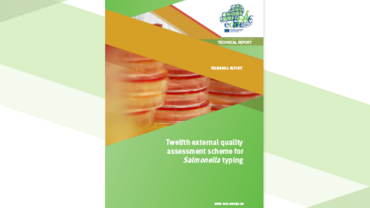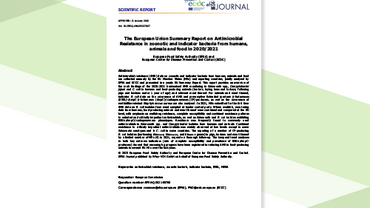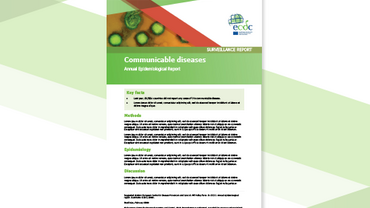Fifth external quality assessment scheme for Salmonella typing
This report presents the results of the fifth round of the Salmonella External Quality Assessment (EQA) scheme for typing of Salmonella enterica spp. enterica (further EQA-5). The EQA covers the methods Pulsed Field Gel Electrophoresis (PFGE) and Multiple Locus Variable number of tandem repeat Analysis (MLVA). The objectives of EQA-5 were to assess the quality of PFGE and MLVA and the comparability of the collected test results between participating public health national reference laboratories in EU/EEA and EU candidate countries. A total of 24 laboratories participated in the EQA which took place from October 2013 to March 2014.
Executive summary
Salmonellosis is the second most commonly reported zoonotic disease with an EU notification rate of 22.2 cases per 100 000 population, and Salmonella is a common cause of foodborne outbreaks. Since 2007, ECDC’s Programme on Food- and Waterborne Diseases and Zoonoses (FWD) has been responsible for the EU-wide surveillance of salmonellosis, including facilitation of the detection and investigation of foodborne outbreaks. Surveillance data, including some basic typing parameters for the isolated pathogen, are reported by the Member States to the European Surveillance System (TESSy). In addition to this basic characterisation of the pathogens, there is a public health benefit in using more advanced and more discriminatory typing techniques for surveillance of foodborne infections. In 2012, ECDC initiated a pilot project on enhanced surveillance through incorporation of molecular typing data (‘molecular surveillance’).
The objectives of this EQA-5 are to assess the quality of PFGE and MLVA and the comparability of the collected test results between participating public health national reference laboratories in EU/EEA and EU candidate countries. Strains for the EQA were selected according to their current relevance to public health in Europe. Sets of ten strains were selected for each method (i.e. a mixture of Salmonella serovars for PFGE and Salmonella Typhimurium strains for MLVA).
A total of 24 laboratories participated in at least one part of the EQA-5: 22 laboratories (92%) produced PFGE results, 14 laboratories (58%) produced MLVA results. Twelve laboratories (50%) completed both PFGE and MLVA.
The majority (82%) of the laboratories were able to produce a PFGE gel of sufficiently high quality to allow for the profiles to be compared to profiles obtained by other laboratories. The subsequent normalisation and interpretation of the profiles were performed using specialised software (BioNumerics). Sixteen laboratories completed the gel analysis and this was generally performed well in accordance with the guidelines. Eighty-seven per cent scored from fair to excellent. Although MLVA is a relatively new method, 71% of the laboratories reported correct MLVA profiles for all 10 strains and 93% found the correct profile for at least nine of the ten strains. The results indicate that the majority of the participating laboratories were able to perform the critical calibration of raw data and use the agreed nomenclature.
This EQA-5 scheme for the typing of Salmonella is the second EQA specifically organised for laboratories participating in the European Food- and Waterborne Diseases and Zoonoses Network (FWD-Net) that includes molecular typing methods. The large number of participating laboratories and their strong performance in the EQA is encouraging. There was a small decrease in number of participating laboratories in the PFGE part (from 25 to 22), and the number of gels which were not useful in an inter-laboratory comparison decreased from 10 to 4. The molecular surveillance system that is being implemented as part of TESSy relies on the capacity of the FWD-Net laboratories to produce comparable typing results. At the moment, the molecular typing methods used for EU-wide surveillance are PFGE for all serovars and MLVA for Typhimurium. This EQA demonstrates that a majority of the participating laboratories were able to produce good typing results. One third of the laboratories produced results that need to be improved before inter-laboratory exchange of data; however, for the majority of the technical issues identified an acceptable quality is within reach by optimising procedures within laboratories, troubleshooting assistance and training.






